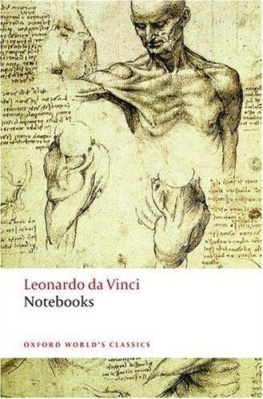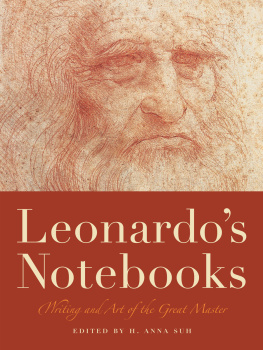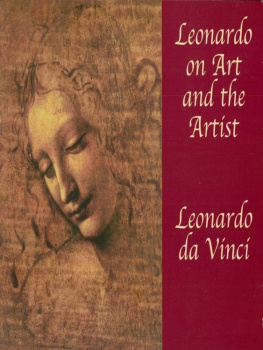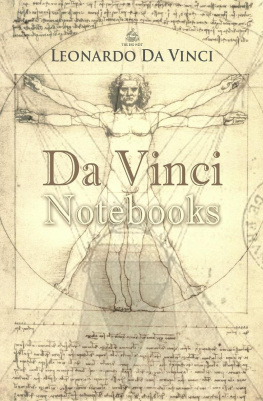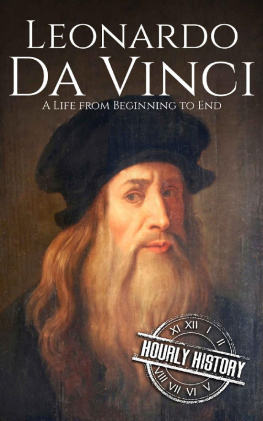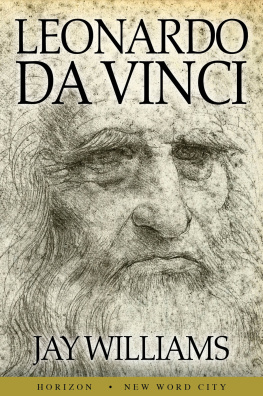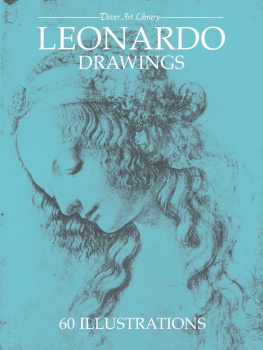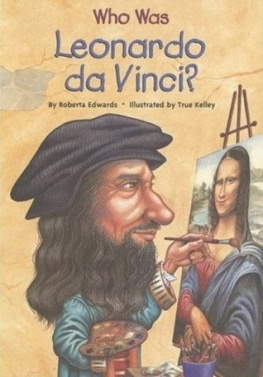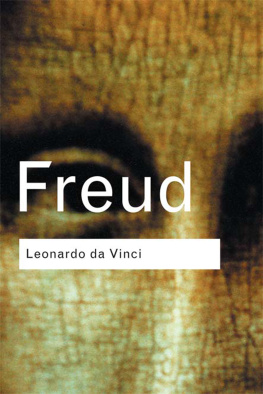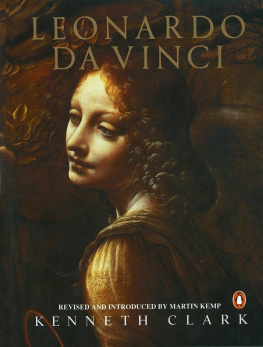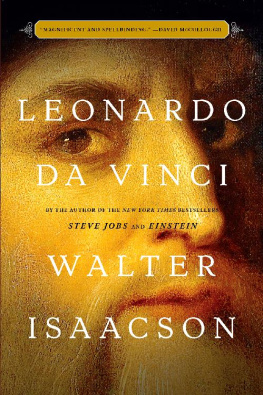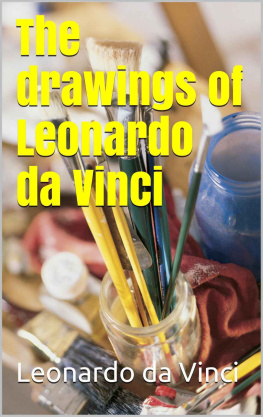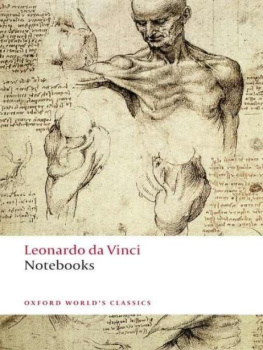Leonardo Da Vinci - The Notebooks of Leonardo Da Vinci
Here you can read online Leonardo Da Vinci - The Notebooks of Leonardo Da Vinci full text of the book (entire story) in english for free. Download pdf and epub, get meaning, cover and reviews about this ebook. genre: Detective and thriller. Description of the work, (preface) as well as reviews are available. Best literature library LitArk.com created for fans of good reading and offers a wide selection of genres:
Romance novel
Science fiction
Adventure
Detective
Science
History
Home and family
Prose
Art
Politics
Computer
Non-fiction
Religion
Business
Children
Humor
Choose a favorite category and find really read worthwhile books. Enjoy immersion in the world of imagination, feel the emotions of the characters or learn something new for yourself, make an fascinating discovery.
- Book:The Notebooks of Leonardo Da Vinci
- Author:
- Genre:
- Rating:3 / 5
- Favourites:Add to favourites
- Your mark:
- 60
- 1
- 2
- 3
- 4
- 5
The Notebooks of Leonardo Da Vinci: summary, description and annotation
We offer to read an annotation, description, summary or preface (depends on what the author of the book "The Notebooks of Leonardo Da Vinci" wrote himself). If you haven't found the necessary information about the book — write in the comments, we will try to find it.
The Notebooks of Leonardo Da Vinci — read online for free the complete book (whole text) full work
Below is the text of the book, divided by pages. System saving the place of the last page read, allows you to conveniently read the book "The Notebooks of Leonardo Da Vinci" online for free, without having to search again every time where you left off. Put a bookmark, and you can go to the page where you finished reading at any time.
Font size:
Interval:
Bookmark:
This eBook was produced by Charles Aldarondo and the DistributedProofreaders team.
The Notebooks of Leonardo Da Vinci
Translated by Jean Paul Richter
1888
A singular fatality has ruled the destiny of nearly all the mostfamous of Leonardo da Vinci's works. Two of the three most importantwere never completed, obstacles having arisen during his life-time,which obliged him to leave them unfinished; namely the SforzaMonument and the Wall-painting of the Battle of Anghiari, while thethirdthe picture of the Last Supper at Milanhas sufferedirremediable injury from decay and the repeated restorations towhich it was recklessly subjected during the XVIIth and XVIIIthcenturies. Nevertheless, no other picture of the Renaissance hasbecome so wellknown and popular through copies of every description.
Vasari says, and rightly, in his Life of Leonardo, "that he labouredmuch more by his word than in fact or by deed", and the biographerevidently had in his mind the numerous works in Manuscript whichhave been preserved to this day. To us, now, it seems almostinexplicable that these valuable and interesting original textsshould have remained so long unpublished, and indeed forgotten. Itis certain that during the XVIth and XVIIth centuries theirexceptional value was highly appreciated. This is proved not merelyby the prices which they commanded, but also by the exceptionalinterest which has been attached to the change of ownership ofmerely a few pages of Manuscript.
That, notwithstanding this eagerness to possess the Manuscripts,their contents remained a mystery, can only be accounted for by themany and great difficulties attending the task of deciphering them.The handwriting is so peculiar that it requires considerablepractice to read even a few detached phrases, much more to solvewith any certainty the numerous difficulties of alternativereadings, and to master the sense as a connected whole. Vasariobserves with reference to Leonardos writing: "he wrote backwards,in rude characters, and with the left hand, so that any one who isnot practised in reading them, cannot understand them". The aid of amirror in reading reversed handwriting appears to me available onlyfor a first experimental reading. Speaking from my own experience,the persistent use of it is too fatiguing and inconvenient to bepractically advisable, considering the enormous mass of Manuscriptsto be deciphered. And as, after all, Leonardo's handwriting runsbackwards just as all Oriental character runs backwardsthat isto say from right to leftthe difficulty of reading direct from thewriting is not insuperable. This obvious peculiarity in the writingis not, however, by any means the only obstacle in the way ofmastering the text. Leonardo made use of an orthography peculiar tohimself; he had a fashion of amalgamating several short words intoone long one, or, again, he would quite arbitrarily divide a longword into two separate halves; added to this there is no punctuationwhatever to regulate the division and construction of the sentences,nor are there any accentsand the reader may imagine that suchdifficulties were almost sufficient to make the task seem adesperate one to a beginner. It is therefore not surprising that thegood intentions of some of Leonardo s most reverent admirers shouldhave failed.
Leonardos literary labours in various departments both of Art and ofScience were those essentially of an enquirer, hence the analyticalmethod is that which he employs in arguing out his investigationsand dissertations. The vast structure of his scientific theories isconsequently built up of numerous separate researches, and it ismuch to be lamented that he should never have collated and arrangedthem. His love for detailed researchas it seems to mewas thereason that in almost all the Manuscripts, the different paragraphsappear to us to be in utter confusion; on one and the same page,observations on the most dissimilar subjects follow each otherwithout any connection. A page, for instance, will begin with someprinciples of astronomy, or the motion of the earth; then come thelaws of sound, and finally some precepts as to colour. Another pagewill begin with his investigations on the structure of theintestines, and end with philosophical remarks as to the relationsof poetry to painting; and so forth.
Leonardo himself lamented this confusion, and for that reason I donot think that the publication of the texts in the order in whichthey occur in the originals would at all fulfil his intentions. Noreader could find his way through such a labyrinth; Leonardo himselfcould not have done it.
Added to this, more than half of the five thousand manuscript pageswhich now remain to us, are written on loose leaves, and at presentarranged in a manner which has no justification beyond the fancy ofthe collector who first brought them together to make volumes ofmore or less extent. Nay, even in the volumes, the pages of whichwere numbered by Leonardo himself, their order, so far as theconnection of the texts was concerned, was obviously a matter ofindifference to him. The only point he seems to have kept in view,when first writing down his notes, was that each observation shouldbe complete to the end on the page on which it was begun. Theexceptions to this rule are extremely few, and it is certainlynoteworthy that we find in such cases, in bound volumes with hisnumbered pages, the written observations: "turn over", "This is thecontinuation of the previous page", and the like. Is not thissufficient to prove that it was only in quite exceptional cases thatthe writer intended the consecutive pages to remain connected, whenhe should, at last, carry out the often planned arrangement of hiswritings?
What this final arrangement was to be, Leonardo has in most casesindicated with considerable completeness. In other cases thisauthoritative clue is wanting, but the difficulties arising fromthis are not insuperable; for, as the subject of the separateparagraphs is always distinct and well defined in itself, it isquite possible to construct a well-planned whole, out of thescattered materials of his scientific system, and I may venture tostate that I have devoted especial care and thought to the dueexecution of this responsible task.
The beginning of Leonardo's literary labours dates from about histhirty-seventh year, and he seems to have carried them on withoutany serious interruption till his death. Thus the Manuscripts thatremain represent a period of about thirty years. Within this spaceof time his handwriting altered so little that it is impossible tojudge from it of the date of any particular text. The exact dates,indeed, can only be assigned to certain note-books in which the yearis incidentally indicated, and in which the order of the leaves hasnot been altered since Leonardo used them. The assistance theseafford for a chronological arrangement of the Manuscripts isgenerally self evident. By this clue I have assigned to the originalManuscripts now scattered through England, Italy and France, theorder of their production, as in many matters of detail it is highlyimportant to be able to verify the time and place at which certainobservations were made and registered. For this purpose theBibliography of the Manuscripts given at the end of Vol. II, may beregarded as an Index, not far short of complete, of all Leonardo sliterary works now extant. The consecutive numbers (from 1 to 1566)at the head of each passage in this work, indicate their logicalsequence with reference to the subjects; while the letters andfigures to the left of each paragraph refer to the originalManuscript and number of the page, on which that particular passageis to be found. Thus the reader, by referring to the List ofManuscripts at the beginning of Volume I, and to the Bibliography atthe end of Volume II, can, in every instance, easily ascertain, notmerely the period to which the passage belongs, but also exactlywhere it stood in the original document. Thus, too, by following thesequence of the numbers in the Bibliographical index, the reader mayreconstruct the original order of the Manuscripts and recompose thevarious texts to be found on the original sheetsso much of it,that is to say, as by its subject-matter came within the scope ofthis work. It may, however, be here observed that Leonardo sManuscripts contain, besides the passages here printed, a greatnumber of notes and dissertations on Mechanics, Physics, and someother subjects, many of which could only be satisfactorily dealtwith by specialists. I have given as complete a review of thesewritings as seemed necessary in the Bibliographical notes.
Next pageFont size:
Interval:
Bookmark:
Similar books «The Notebooks of Leonardo Da Vinci»
Look at similar books to The Notebooks of Leonardo Da Vinci. We have selected literature similar in name and meaning in the hope of providing readers with more options to find new, interesting, not yet read works.
Discussion, reviews of the book The Notebooks of Leonardo Da Vinci and just readers' own opinions. Leave your comments, write what you think about the work, its meaning or the main characters. Specify what exactly you liked and what you didn't like, and why you think so.


